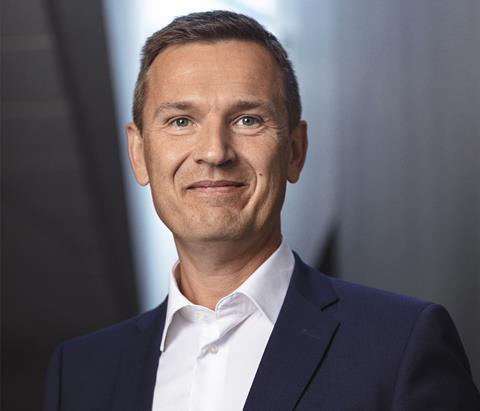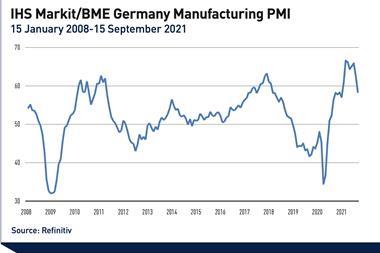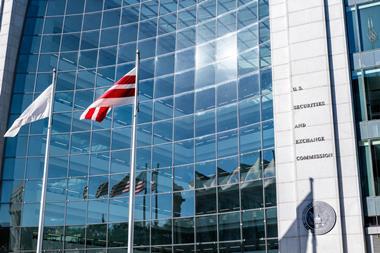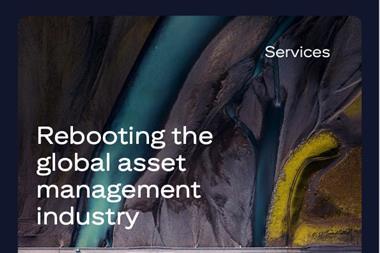Big pension funds across the Nordic region mainly expect inflation to settle back next year, albeit at a higher level – but investment decision-makers are also alert to the chance things might not work out so well, according to views canvassed by IPE.
Financial markets around the world have been spooked by rising inflation over the course of 2021, with prices having been sensitive in particular to news that could affect monetary policy attempts to rein it in.
Kristin Magnusson Bernard, chief executive officer of AP1, said the Swedish state pension buffer fund expects a soft landing of inflation figures in 2022 with annual numbers around 2-3%.
“We believe that supply-chain issues will gradually subside and that commodity price effects might eventually go in the opposite direction from recent developments,” she told IPE, adding that domestic inflation components were now key areas to watch – especially the impact of rents in the US.
But the SEK431.5bn (€43.6bn) pension fund still believes inflation numbers and rates developments will not necessarily go hand-in-hand, said Magnusson Bernard.
“We’re quite convinced that the higher inflation tolerance and less forward-looking monetary policy strategy of the major central banks are more than empty words,” she said.
At Akademiker Pension in Denmark, chief investment officer Anders Schelde sees inflation staying high until a partial resolution of the supply-demand imbalance in the course of next year.
“But looking further ahead we foresee that inflation rates will come down again as economic growth moderates,” he told IPE.

However, the pension fund thinks central banks have become more patient in terms of inflation, he said, so expects slightly higher inflation rates going forward in comparison with pre-pandemic levels.
“Since February, the level and persistence of inflation has definitely surprised us, but all in all we are not that worried for long-term inflation outlook,” said Schelde.
Rasmus Cederholm, CIO of Copenhagen-based AP Pension, also expects the inflation rate to fall next year and rest at a new, higher level than the low inflation of the 2010s.
A combination of three factors is behind the very high inflation rates being seen now, he said. COVID restrictions and a jump in household disposable income have boosted demand for goods, but Asia’s zero tolerance for virus spread has meant the summer waves of infection led to factory shutdowns, so less global manufacturing.
Thirdly, Cederholm said, sanded-out labour markets in the west mean the domestic warehousing and transport sector cannot provide enough labour.
“These three factors combined have led to a global demand for goods that is higher than ever before, and at the same time, global supply chains have partially broken down,” he said.
AP Pension did not fully expect the resulting upward price pressure, he said, so it has had to raise its inflation expectations.
“We think we are going to see an inflation level around 2%,” he said.
But Åmund Lunde, CEO of Oslo Pensjonsforsikring (OPF), said he believed the markets were still too optimistic about how fast the pandemic-created supply shocks would unwind.
If equity markets were priced correctly, he said it implied investors thought firms could pass cost increases created by bottlenecks through into higher consumer prices.
“That is very close to what we call inflation, as opposed to a change in relative prices,” he said, adding that it also implied a view central banks would not hike real interest rates.
“Central banks are stuck between a rock and a hard place,” he said, knowing their credibility depended on preserving the purchasing power of their currencies, but fearing a quick response to rising inflation would put the recovery at risk through falling bond and equity markets.
“I have in my 30 years plus career never been so concerned about the combination of macro risk, monetary policy and pricing of asset markets,” Lunde said.
In Stockholm, AP1 is not making any big changes to its asset allocation because of the inflation outlook, according to Magnusson Bernard, who said the fund had been well positioned for rising inflation, though she added that the team did expect to rebalance frequently.
“We continue to believe that risk taking will pay off for some time, although we expect a bumpier ride,” she said.
“We continue to believe that risk taking will pay off for some time, although we expect a bumpier ride”
Kristin Magnusson Bernard, AP1’s CEO
“From current market moves we infer that quite a number of investors are forced to close long positions in fixed income due to tight risk limits.
“That opens up quite attractive opportunities for us, as we are well equipped to stomach risk and believe current market pricing has been running ahead of future policy deliveries in some jurisdictions,” she said.
Back in February, Magnusson Bernard told IPE that AP1 was considering adding elements to its overlay strategy to capture investment opportunities arising from the current uncertainty on the global outlook for inflation.
Asked last week whether these had paid off, she said: “We have been opening and closing positions in US interest-rate futures during the year. We are happy with the results and likely to use similar strategies again.”
So far, Akademiker Pension is sticking with its current asset allocation, according to Schelde.
“That said, we have our eyes on changes in inflation expectations, and on changes in the main messages from central banks,” he added.
Regarding the potential impact of rising inflation and interest rates further ahead, he said: “The duration of our liabilities is quite high, and higher than the duration on our portfolio, but in the short to medium term this does not impact our asset-liability management to any great extent, but we definitely take this into account when we construct our long-term strategic asset allocation portfolio.”
Cederholm said AP Pension’s strategic allocation is structured so its portfolio is robust across different inflation scenarios.
“The nominal bonds are balanced by a significant allocation to real assets such as real estate and infrastructure, and in the equity portfolio, growth shares are balanced with value and quality shares,” he said.
“Therefore, we are comfortable with our current allocation, and the jump in inflation rates has not given rise to concrete investment measures,” he said, adding that the pension fund is keeping its eyes fixed on 2022, where its expectation of a shift in inflation dynamics “may give rise to tactical dispositions”.
As far as the impact on liabilities is concerned, Cederholm said AP Pension has essentially hedged this risk.
“On the part of our portfolio that is based on guaranteed benefits, we have largely hedged the interest rate risk.

“And on our insurance product in the event of loss of earning capacity, which has a built-in purchasing power indexation, we to some extent hedge the risk of rising inflation rates,” he said.
He acknowledged that this also meant the firm would not get the full benefit in the form of falling provisions when interest rates rose or inflation fell, but said it was “entirely in line with the risk we want to take”.
Magnusson Bernard told IPE that modest rises in inflation rates and interest rates across the curve should be expected during the more mature stages of a recovery, which was where the economy was now heading.
“It usually means still decent but unspectacular equity returns, and a more reluctant IPO market.
“It also opens up interesting opportunities to play different currencies against another as the monetary policy tightening will likely proceed at different dates and paces in different countries,” she said.
“In contrast, an environment where annual inflation gets stuck materially above say 5% in combination with rapidly rising rates is about as nasty as it gets for most asset managers,” she said, adding that historically very few asset classes had tended to do well in such situations – perhaps with the rare exception of commodities.
“But we attach a very low likelihood to that happening,” she said.

































No comments yet